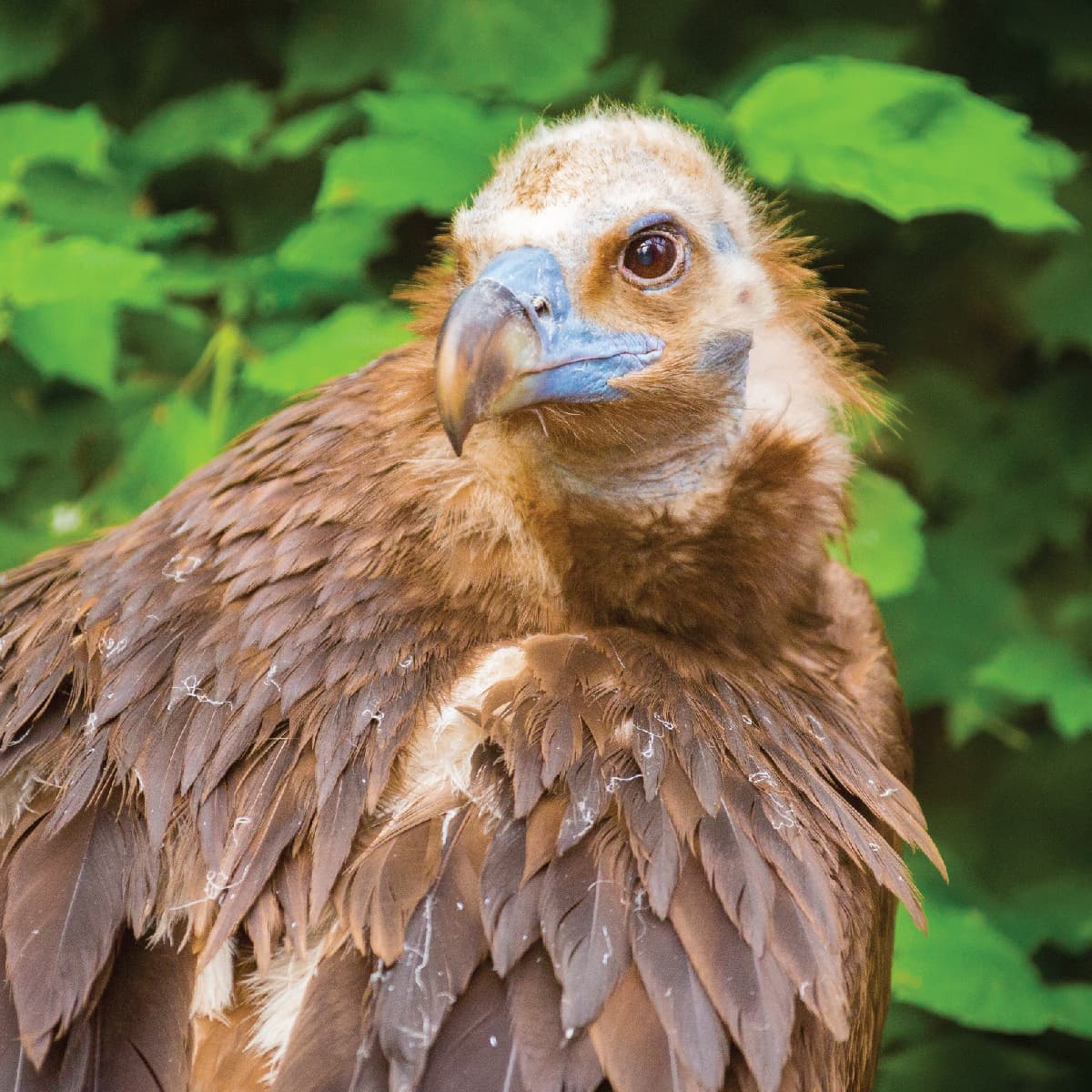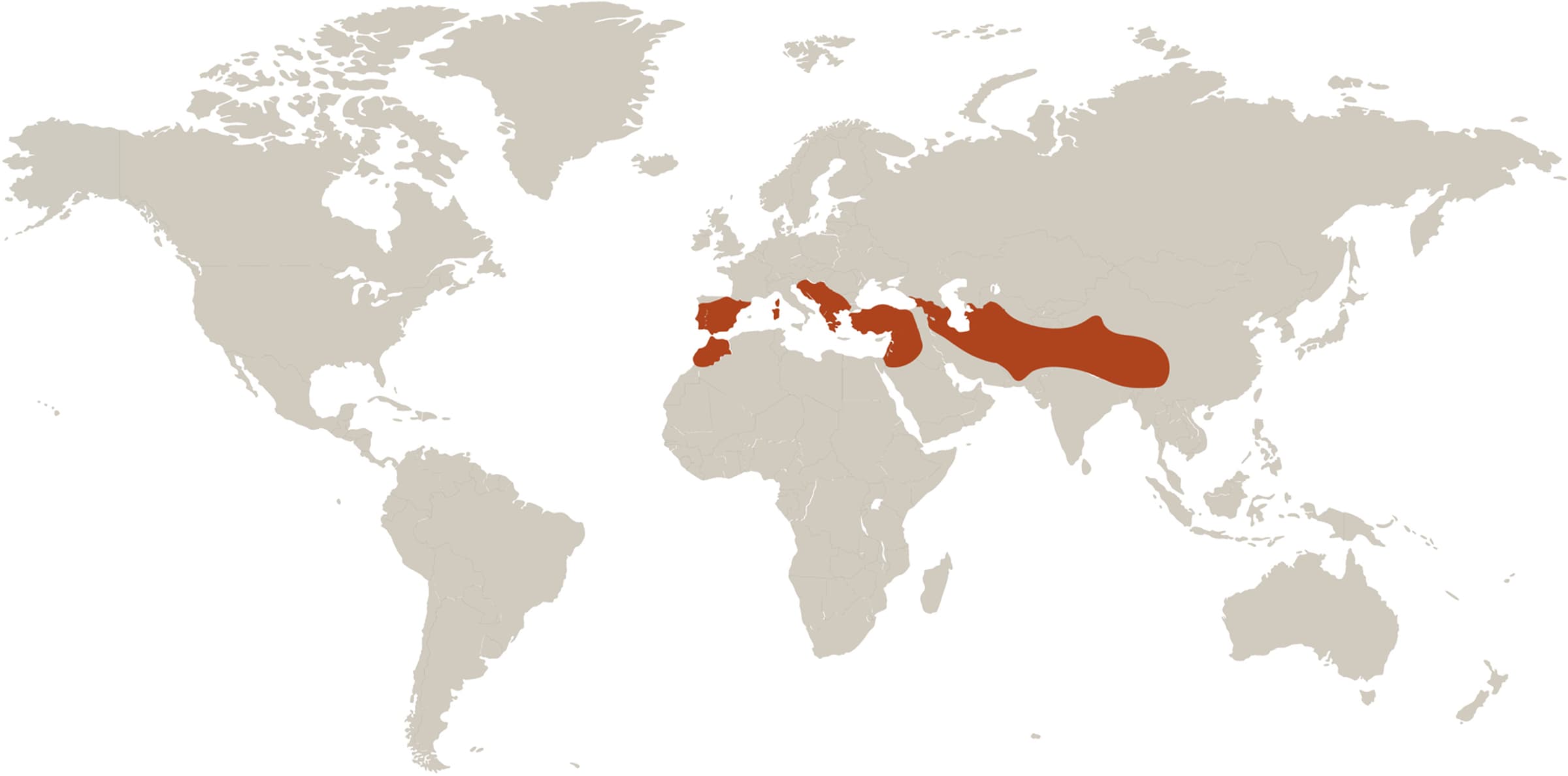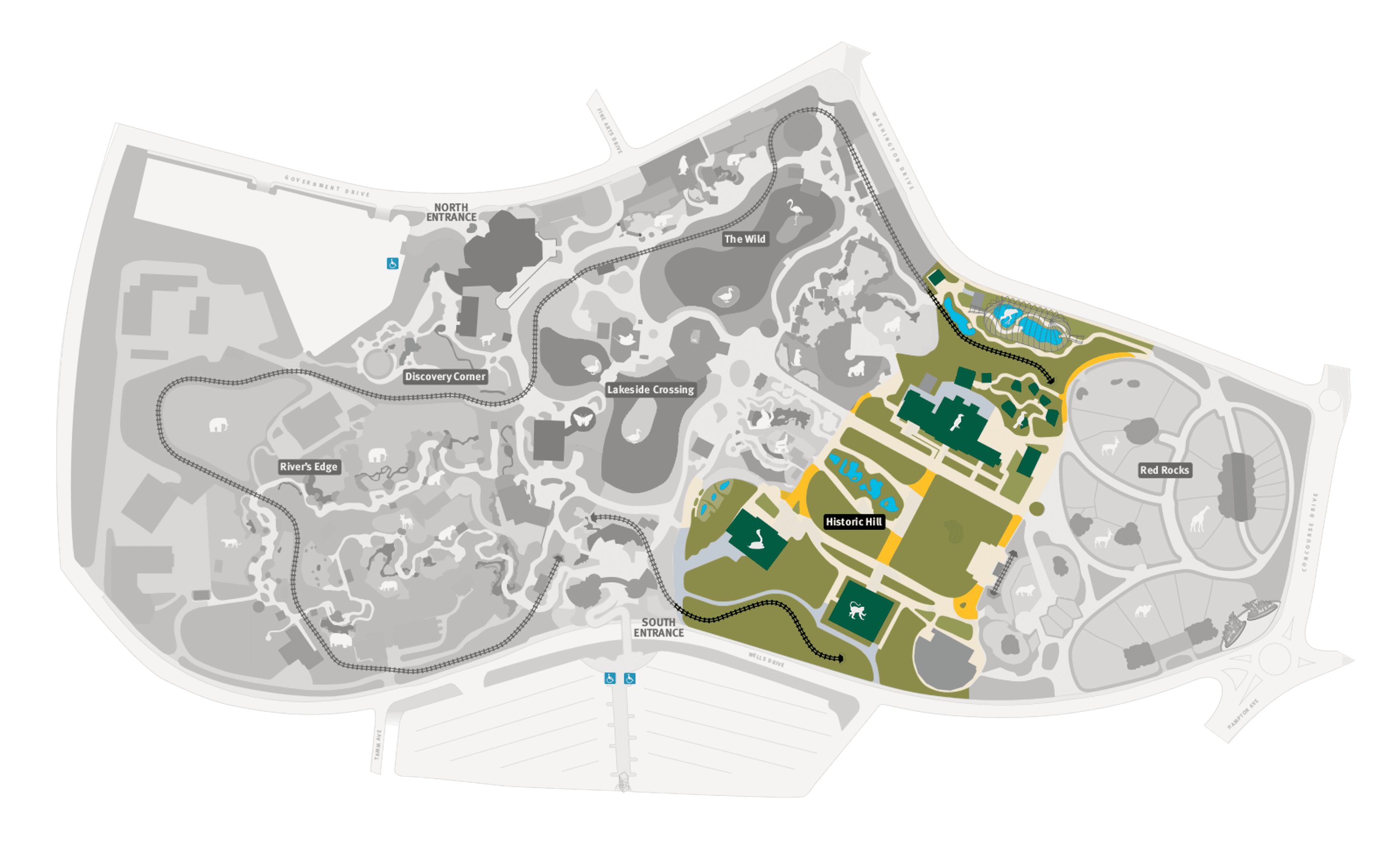
Cinereous Vulture
Aegypius monachus
Did you know?
- Cinereous vultures are part of the Accipitridae family.
- They are also known as the Eurasian black vultures.
- In the sky, an adult resembles a small plane with its 9-foot wingspan.
- They soar all day on warm air currents in search of food, primarily animal carcasses.
- Their size and strong beak often keep other scavengers at bay.
Strong Beaks
Their beaks help them rip chunks of flesh off a carcass. They even have a third eyelid that shields their eyes from the dead animal’s blood and flesh.
Up in the Mountain Tops
These vultures prefer to live in mountainous regions; they’ve even been sighted on Mt. Everest!
Threat Level
- Unknown
- Common
- Near Threatened
- Threatened
- Endangered
- Critically Endangered
- Extinct in the Wild
Near threatened
The Cinereous Vulture is likely to qualify for threatened category in the near future, perhaps very quickly due to a number of human-caused problems, like poisoning.
Range
Europe and northern Asia, from Spain to Japan
Habitat
Forested areas in hills and mountains

We care about cinereous vultures
Vultures are vanishing around the world at an alarming rate. Of the 23 species of vultures in the world, 11 are currently threatened. These birds are declining due to poisoning from feeding on medicated cattle carcasses, power line collisions and loss of food and habitat.
The
Saint Louis Zoo participates in the Association of Zoos and Aquariums (AZA) Species Survival Plan for cinereous
vultures. This is a cooperative breeding program in which a number of
North American zoos work together to ensure the genetic health and
survival of the species. We also support vultures in the wild by participating in the AZA Saving Animals From Extinction African Vulture Program. This program protects wild African vulture populations through monitoring, poisoning prevention, collision prevention and more.
Learn more about how we are helping wildlife around the world.
Find this animal in Historic Hill

SAINT LOUIS ZOO ZONE
Historic Hill
Historic Hill is a lovely stroll through one of the oldest parts of the Saint Louis Zoo. From the 1904 World’s Fair Flight Cage to the Spanish architectural flavor of the 1920s in the Bird House, Primate House and Herpetarium to the finishing touches of our thoroughly modern exhibits, this area of the Zoo has a unique ambiance and a nostalgic history that make it a great destination.

